In the smothering 35° Celsius dry heat in the shadow of no fewer than 19 active volcanoes, Canadian outfit Calibre Mining (TSX: CXB; US-OTC: CXBMF) is accelerating gold production growth in Nicaragua.
Not only is the Central American country regarded as one of the top coffee, cocoa, and tobacco exporters globally, but the geologically active jurisdiction remains exceptionally prospective for minerals, as Calibre is proving as it moves to expand production.
The mid-tier gold miner acquired a dominant land position in Nicaragua in 2019 after buying the El Limon and La Libertad mines, the Pavon gold project and other mineral concessions from B2Gold (TSX: BTO; NYSE: BTG) for US$100 million in cash and scrip.
Since then, the company has been working feverishly to expand the resource base and implement a hub-and-spoke model to boost economies of scale.
The company comes off a strong 2022 performance, having increased gold output 20% over 2021 and increasing the reserve base 33% to 1.4 million oz. gold in February.
While the company has enjoyed success as a first mover, operating in Nicaragua comes with significant risk associated with international criticism of the country’s ruling regime under President Daniel Ortega.
Exploration
Since 2019, with the help of Calibre’s VP for exploration in Nicaragua, Pedro Silva, the company has started to rethink and modernize its approach to exploration in the country. This includes bringing knowledge in house, applying new technologies, and applying a rifle shot approach to targeting.
Silva has had a long and illustrious career spanning nearly three decades, mainly with Newmont (TSX: NGT; NYSE: NEM), Kinross Gold (TSX: K; NYSE: KGC), and Barrick Gold (TSX: ABX; NYSE: GOLD).
Under his stewardship, Calibre has digitized its database and applied various geoscience techniques to help identify new targets. Although these methods are not new to the industry, they are fresh in Nicaragua. Historical exploration was primarily driven by following artisanal mining and relied upon deposits outcropping at the surface.
The introduction of modern techniques has paid off, so far helping to identify a 6-km-long VTEM corridor (a zone of high apparent resistivity) at El Limon dubbed Panteon North.
During a site visit attended by sell-side analysts, the media, and investors, Calibre management was excited to share its latest findings from the Panteon North discovery. Drill results released on Mar. 21 highlight the potential to grow the system with grade.
The Panteon North discovery was first announced in May 2022 as a part of Calibre’s aggressive resource expansion and discovery drill program. Calibre has since expanded the dimensions of the discovery significantly, with the central discovery zone recently delivering an initial probable reserve of 244,000 oz. held in 810,000 tonnes grading 9.45 grams gold per tonne.
The discovery holds the potential for the company to use all of its excess processing capacity in Nicaragua, which stood at 1.6 million tonnes milled in 2022 compared with 2.7 million tonnes per year of installed capacity.
This is important, said Haywood Capital Markets mining analyst Geordie Mark in a Mar. 21 note to clients. “Drilling on the VTEM anomaly supports maiden drilling data released in December 2022 and highlights the structural corridor as a target zone for controlling high-grade gold mineralization,” he wrote.
Calibre’s senior VP for growth Tom Gallo said more drilling results over 2023 should add to the continuity of the Panteon North and northwest system, which are essential to augment future production plans beyond 2025. “Drilling on the VTEM corridor provides future leverage to discovery upside of comparable styles of high-grade, low-sulphidation epithermal mineralization,” said Gallo.
But growth opportunities abound at each of the Nicaraguan assets.
Silva points out that other promising targets include Blag and La Luna at the Eastern Borosi project, Veta Azul and Calvario at La Libertad, and Hagie at El Limon.
“In our view, Calibre has already laid the groundwork to continue its impressive track record of increasing reserves and resources and extending mine lives in Nicaragua,” said Canaccord Genuity mining analyst Michael Fairbairn in a Mar. 8 note to clients.
Calibre’s probable reserves have grown 370% since 2019 to 1.4 million oz. gold as of Dec. 31, 2022. The Nicaragua reserves are held in 6.3 million tonnes grading 5.37 grams gold per tonne for 1.1 million oz. gold. It also holds 3.3 million oz. silver at 16.25 grams per tonne.
Indicated resources stand at 16.8 million tonnes grading 3.37 grams gold per tonne and 8.9 grams silver per tonne for 1.8 million oz. gold and 4.8 million oz. silver. The company holds marginal resources elsewhere, including the Pan project in Nevada.
Free cash generation
In the near term, Calibre is banking on grade-driven production growth as it transitions from a focus on extending legacy mine lives to a focus on growing free cash flow. The company expects to produce 275,000-300,000 oz. gold by 2024, compared with 2022 production of 222,000 oz., which translates to an increase of about 30% at the midpoint of guidance. Calibre has guided for 2023 production of 250,000-275,000 oz.
The growth is expected to be mainly driven by the recent commissioning of the Pavon Central pit and the Eastern Borosi project (on the Atlantic side of the country), boosting production from the year’s second half.
To achieve continued growth, the company is focused on optimizing its mine plans, an effort led by VP for Nicaragua operations David Hendricks, an industry veteran who held senior positions with Barrick and Kinross and most recently was the general manager at the Tasiast mine in Mauritania.
By focusing on project sequencing, Hendriks believes Calibre can grow or sustain production while balancing the growth capital required to bring new projects online.
Fairbairn continues to anticipate Calibre will generate substantial free cash flow over the next several years as it executes its plan in Nicaragua. Notably, he expects Calibre to generate about 32% free cash flow yield by 2025 and projects it will be trading under cash value by 2026 if the share price does not re-rate.
Infrastructure gains
Nicaragua has invested heavily in building out a high-quality road network. Roads are paved with asphalt or interlocking bricks and are exceptionally well maintained by the government. During the site visit, management demonstrated how the country’s improving infrastructure was helping simplify logistics for Calibre’s hub-and-spoke operation.
This enables the company to ship ore from the El Limon operation to fill the extra capacity at its La Libertad mill via road.
Silva explained that Calibre’s busiest trucking route runs 280 kilometres between El Limon and La Libertad, where the company ships about 1,000 tonnes daily.

Calibre Mining is building a hub-and-spoke gold production model in Nicaragua. Credit: Calibre Mining.
After the site visit, the company announced mining at its Pavon Central open pit mine operation, which started in January, had progressed ahead of schedule and budget and averaged 1,000 tonnes per day shipped to the Libertad mill in February.
In a Mar. 15 statement, the company’s president and CEO Darren Hall (who was unfortunately not with the tour group), noted Pavon Central will be a significant contributor to the company’s production growth starting this year.
Nicaragua’s active geology also lends itself to ample renewable energy generation, and the Ortega regime is hoping to capitalize on the opportunity.
Laureano Ortega — one of President Ortega’s sons and widely tipped to be in line to take over from his father should Ortega’s wife, Rosario Murillo, not accede to lead government — told the tour group during a presentation that renewable energy generation accounted for 75% of the country’s power in 2022 and that the nation is on track for 90% renewable coverage by 2033.
The Ortega tinge
All is not smooth sailing in Nicaragua, given the generally oppressive political regime prompting risk-weary investors to sit on the sidelines to see where things are headed under Ortega.
Calibre shares took a nosedive to their most recent 12-month low on Oct. 25, 2022, when the U.S. government announced the latest round of targeted sanctions to stifle the regime.
The new U.S. sanctions under President Joe Biden expanded a previously signed Donald Trump-era executive order to include specific potential restrictions on trade and investment involving Nicaragua, with a particular reference to the gold industry.
The U.S. Treasury Department also acted in concert with the order to designate sanctions against Nicaragua’s General Directorate of Mines (DGM) and an official of the Nicaraguan government named Cerna, the former head of state security and a confidante to Ortega. These actions come as a continuation of the U.S. government’s efforts to limit the power and resources of the Ortega regime, which has silenced critics and dismantled democratic institutions in the country.
The United Nations also regularly files reports alleging human rights violations by the Ortega regime during the violent 2018 uprisings.
A recent report identified a pattern of alleged extrajudicial executions carried out by agents of the National Police and members of pro-government armed groups who acted in a joint and coordinated manner during protests in 2018. The report alleges the government obstructed any investigation regarding these and other deaths. Journalists have also faced threats by the regime, with more than 70 forced to go into exile since 2018.
While the recent U.S. sanctions targeted the Ortega regime, they did not target the Nicaraguan people or foreign entities, including gold miners, said senior VP for corporate development and investor relations Ryan King.
King reiterated that this latest round of sanctions were numbers 54 and 55 of the existing list of U.S. sanctions targeting Nicaragua. Still, there have been zero business disruption to date.
“Nicaragua has a long-standing mining tradition, with a solid and clearly defined legal framework for the sector. As investors, we comply with national laws and adhere to international standards in our work,” King said. “For each of our mining projects, we carry out transparent, legitimate prior consultation processes with the communities, their representatives and local governments.”
King added that Calibre generates more than 3,500 direct and contractor jobs in Nicaragua, translating into direct benefits for communities, including significant tax revenues, social investment, and stimulation of the local economy through the good wages the company pays and goods and services it purchases.
He also stressed that the U.S. actions are designed to target state-controlled mining operations and those at the top of President Ortega’s regime, not the Nicaraguan people or foreign entities.
Calibre estimates it had distributed about US$286 million in economic value in the Nicaraguan economy in 2021, comprising about 2% of the country’s gross domestic product.
“As such an integral part of the Nicaraguan economy, we do not believe the U.S. government could sanction Calibre without having a material negative impact on the Nicaraguan people,” wrote Fairbairn.
As of Mar. 27, Calibre’s Toronto-quoted equity at $1.22 is down about 21% over the past 12 months, having traded between 52¢ and $1.65, giving it a market capitalization of $550 million. The stock has recuperated about 58% in value since its Oct. 24 low.

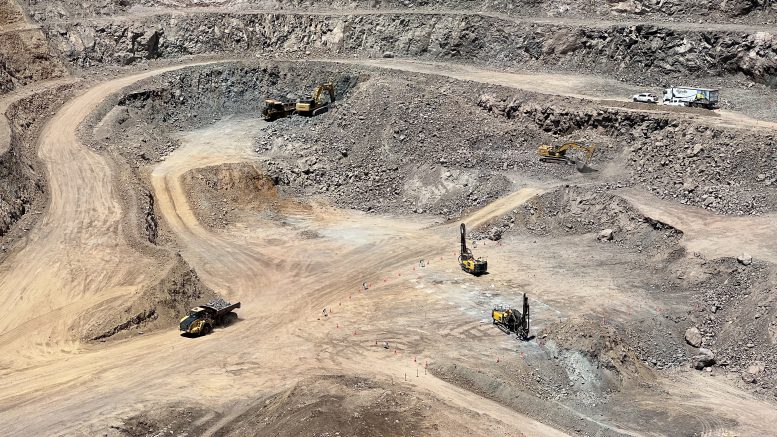
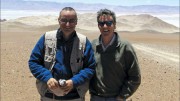
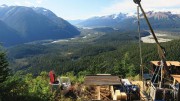
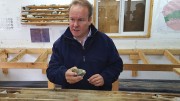
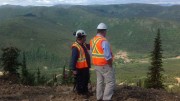
Be the first to comment on "Site visit: Calibre presses pedal to the metal in Nicaragua despite the Ortega tinge"